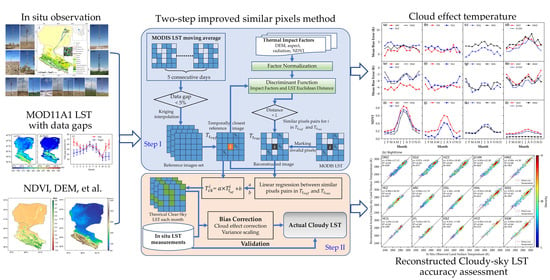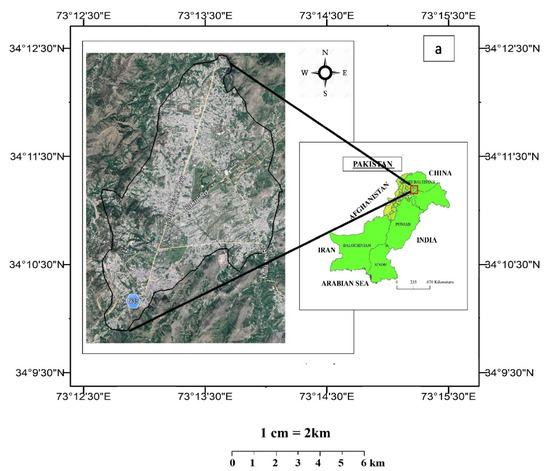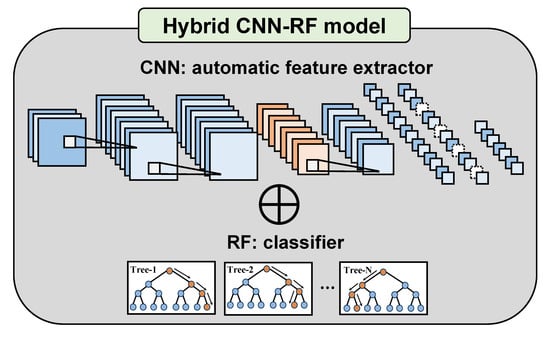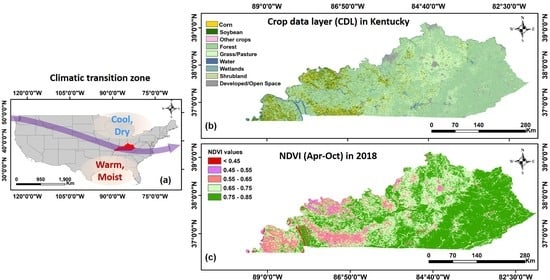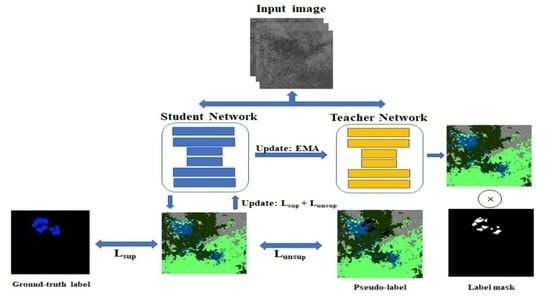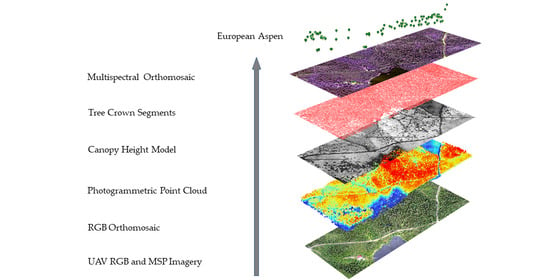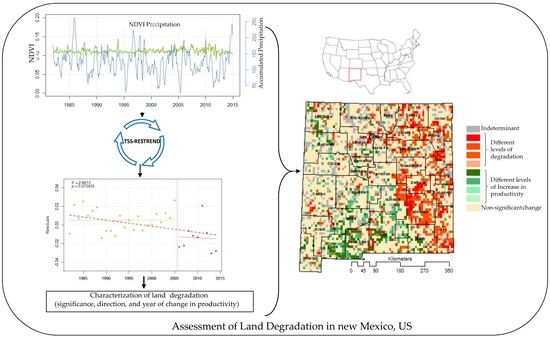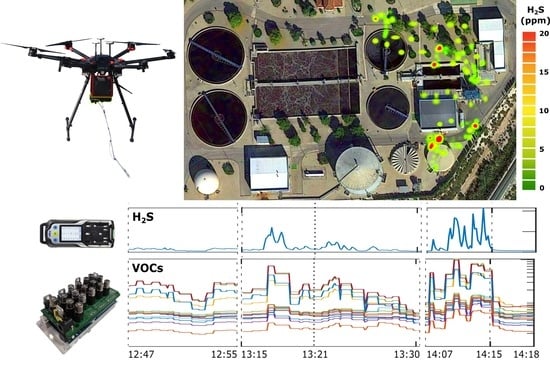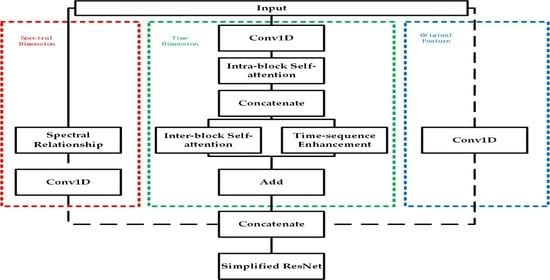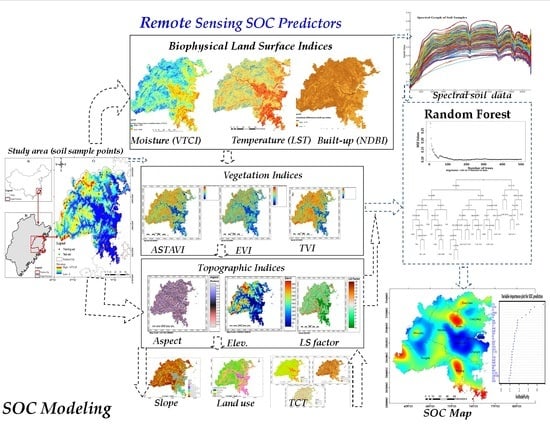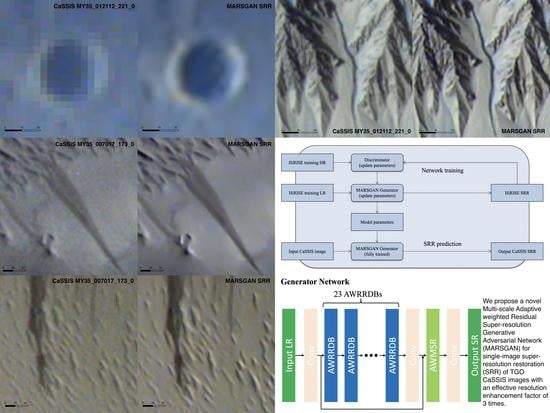Remote Sens. 2021, 13(9), 1671; https://doi.org/10.3390/rs13091671 - 26 Apr 2021
Cited by 36 | Viewed by 6095
Abstract
The MODIS land surface temperature (LST) product is one of the most widely used data sources to study the climate and energy-water cycle at a global scale. However, the large number of invalid values caused by cloud cover limits the wide application of
[...] Read more.
The MODIS land surface temperature (LST) product is one of the most widely used data sources to study the climate and energy-water cycle at a global scale. However, the large number of invalid values caused by cloud cover limits the wide application of the MODIS LST. In this study, a two-step improved similar pixels (TISP) method was proposed for cloudy sky LST reconstruction. The TISP method was validated using a temperature-based method over various land cover types. The ground measurements were collected at fifteen stations from 2013 to 2018 during the Heihe Watershed Allied Telemetry Experimental Research (HiWATER) field campaign in China. The estimated theoretical clear-sky temperature indicates that clouds cool the land surface during the daytime and warm it at nighttime. For bare land, the surface temperature shows a clear seasonal trend and very similar across stations, with a cooling amplitude of 4.14 K in the daytime and a warming amplitude of 3.99 K at nighttime, as a yearly average. The validation result showed that the reconstructed LST is highly consistent with in situ measurements and comparable with MODIS LST validation accuracy, with a mean bias of 0.15 K at night (−0.43 K in the day), mean RMSE of 2.91 K at night (4.41 K in the day), and mean R2 of 0.93 at night (0.90 in the day). The developed method maximizes the potential of obtaining quality MODIS LST retrievals, ancillary data, and in situ observations, and the results show high accuracy for most land cover types.
Full article
(This article belongs to the Special Issue Application of MODIS Data for Environmental Research)
►
Show Figures
